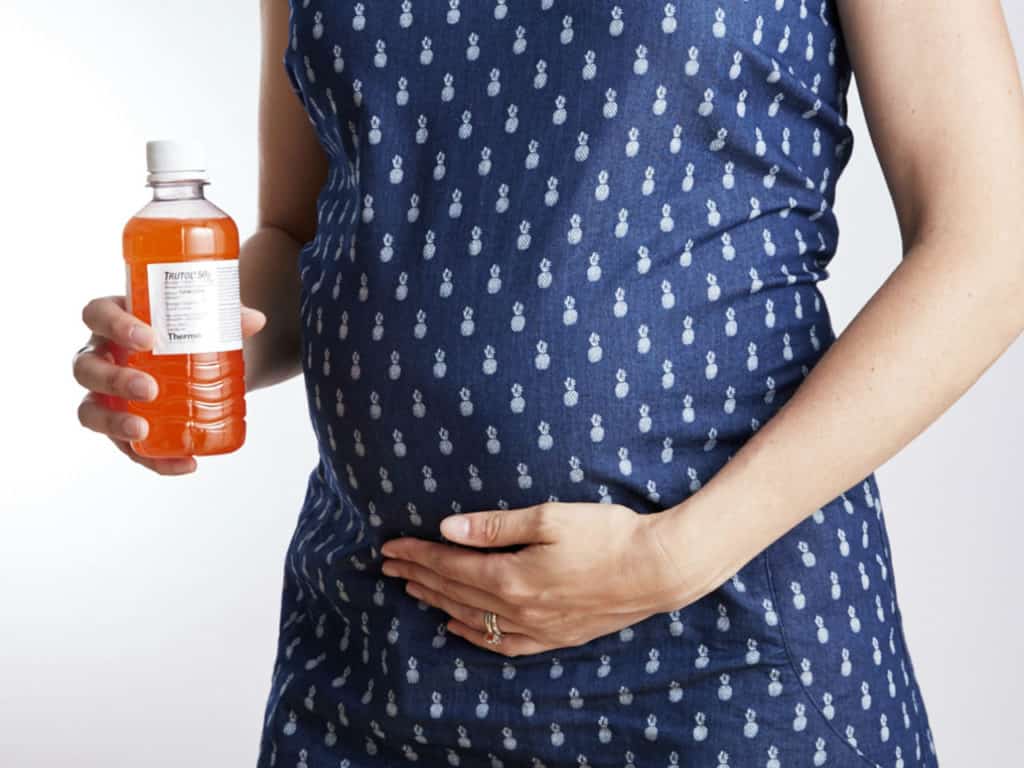
Table of Contents
Is it time for a glucose screening test? The Centers for Disease Control and Prevention says that up to 10 percent of pregnancies get affected by gestational diabetes (GD or GDM). Hence, why testing is recommended for all expecting mothers. Gestational diabetes (GD) could turn into something serious if it is left unchecked. But the good news is that this pregnancy complication is one of the easiest to manage.
Most expecting women with GD can control their blood sugar through diet and exercise. Medication can be an option if those aren’t enough. In both cases, you’re no doubt going to have a perfectly normal pregnancy and a healthy baby.
Then, what to expect when it’s time for your glucose test? What could happen if the results turn out to be higher than normal? Keep on reading because you’ll find everything you need to know, including the steps you can take to keep your blood sugar in check.
What is a glucose screening test?
This is a routine pregnancy test that checks for gestational diabetes. A glucose screening test looks for glucose or blood sugar levels that are higher-than-normal, which could indicate that you have or are at risk of developing GD.
A glucose test, for most women, is usually done between week 24 to week 28 of pregnancy. However, if you’re at higher risk for the disorder, which includes if you’re 35 or older, family history of diabetes, obese, or had gestational diabetes in a previous pregnancy, your health care provider might opt to test earlier.
Is it necessary to take a glucose test when you’re pregnant?
The American College of Obstetricians and Gynecologists (ACOG) recommends that all women should be screened for gestational diabetes. So, this is one screening you shouldn’t skip, even if you don’t like blood tests or draws. Gestational diabetes or GD is one of the most common pregnancy complications. However, if it’s left untreated, it can cause a lot of problems including:
- Stillbirth.
- Having macrosomia or a too-large baby, can make your delivery more difficult or increases the chances of having a C-section.
- Pre-eclampsia is the sudden onset of high blood pressure.
- After your baby is born, they could have jaundice, breathing difficulties, or low blood sugar.
- It causes a higher risk for type 2 diabetes for your baby later in life.
An easy and effective way to catch gestational diabetes is by performing glucose screenings. You can get the problem under control, usually with simple lifestyle changes. All of this leads to a smoother pregnancy, delivery, and a healthier baby.
How to prepare for a glucose test?
The preparation depends on the type of test your healthcare provider has ordered. If you’re having the two-step test or as sometimes called the 1-hour glucose test, then you don’t have to do anything specific for preparation. You can eat normally on both days, the night before and the day of the test.
Whereas, if you’re getting the one-step test, avoid eating or drinking anything other than water for about 8 to 14 hours before the test.
However, if you’re not sure which test your doctor has ordered, just ask them! They’ll let you know which screening you’ll be undergoing. Also, ask if there are any specific instructions that you need to follow to make sure the test results are accurate.
How is a glucose test performed?
Are you wondering or curious about how exactly a glucose test is done? A glucose screening is pretty simple, especially if you are a bit of a sweet tooth. Like mentioned earlier, there are two types of tests, and each works a little differently.
Two-step test
First, you’ll have to drink a very sweet glucose (sugar) drink, which usually tastes like flat orange soda. Then, you’ll be asked to wait for an hour before someone draws your blood and tests for glucose.
However, if your glucose comes back too high, you’ll need to do the second step of the test. This involves drinking more of the glucose drink and having your blood tested during multiple intervals.
One-step test
For this particular test, you’ll have your blood drawn first, then asked to drink the sweet glucose drink. For the next two hours, you’ll have your blood drawn again two more times.
What does having a high glucose level indicate?
If your glucose screening results show increased levels of glucose in your blood, it means that to process the extra glucose in your system, you might not be producing enough insulin. Then, your healthcare provider would order a glucose tolerance test (GTT). You’ll have to fast overnight, for this test. After drawing your blood in the morning, you’ll be asked to drink a higher-concentration glucose mixture. Finally, they’ll draw your blood three more times, at one, two, and three hours later.
If the GTT indicates gestational diabetes, you’ll be referred to a nutritionist for a special diet. A nutritionist would probably ask you to limit your consumption of high-sugar foods and refined carbohydrates. You need to focus on eating more fruits, vegetables, proteins, healthy fats, and a moderate amount of complex carbohydrates such as whole grains, sweet potatoes, and starchy veggies.
At home, you’ll also need to observe your glucose levels several times a day by using a special machine that uses a drop of blood and gives you an immediate reading. However, you may require medication if you’re not able to control the levels with changes to your diet alone. But, there’s no need to worry because chances are you won’t have to go that route.
Are there any risks associated with glucose tests?
Gestational diabetes tests are safe. They don’t come with any side effects or major risks.
With that being said, after glugging that glucose drink, you might not feel your best. Some expecting women find themselves feeling a little sick after drinking it because the drink floods your system with lots of sugar. You might feel nauseous, sweaty, or lightheaded. Usually, after you have some real food, the feeling should ease up. However, if it persists or you’re still concerned, you could always call your doctor.
What does it mean to have glucose in your urine?
Your healthcare provider will take a sample of your urine at every prenatal appointment to check for glucose and a possible sign of gestational diabetes.
You will need to take a glucose screening earlier than usual if your practitioner finds that your urine glucose levels are high and you have risk factors for gestational diabetes, or there are large amounts of glucose at any single testing.
However, if your urine tests positive only once, it is okay. You’re not alone, it happens to most women at some point during pregnancy. Don’t just diagnose yourself with gestational diabetes because even your doctor may consider it as “medically insignificant”. As it does not affect your growing baby.
How to lower your blood glucose levels?
During pregnancy, it’s still important to control your blood sugar levels. Even if you never test positive for glucose in your urine and have a normal glucose screening. You could follow some of these tips on what to eat to keep blood sugar spikes at bay:
1. Cutting back on “refined” or “simple” carbohydrates
Refined carbohydrates such as muffins, orange juice, sugary cereal, and other sweets are the reason behind glucose spikes. They enter your bloodstream quickly and result in extra sugar being filtered out through your urine.
2. Consume healthy carbohydrates instead
“Complex” or “unrefined” carbohydrates (such as whole fresh fruits, whole-grain bread, cereals, baked potatoes) are digested more slowly into your bloodstream and are less likely to give you the large sugar jolts. It can result in excess glucose filtering into your urine. Complex carbohydrates boast a good amount of fiber and slow the absorption of sugar into your bloodstream. In addition to that, they provide lots of essential nutrients during pregnancy (like folic acid, fiber, and iron).
3. Crush cravings creatively
Pregnancy cravings usually tend to leave you with a hefty appetite for carbs. You can satisfy them while still eating well. For example, you could blend banana slices, milk, and ice cubes to make a frothy, banana-split like shake, or make a healthier pizza “slice” by topping a whole-wheat English muffin with tomato sauce and low-fat mozzarella cheese or even enjoy half a fresh grapefruit drizzled with honey instead of a large glass of OJ.
4. Try to be active every day
Expecting women are advised to log 30 minutes of moderate-intensity exercise, such as walking or swimming at least 5 days a week. Moving around a little after eating is especially good for blood sugar control so try to squeeze in an extra 10- or 15-minute walk after meals.
5. Gain the right amount of weight
If you gain weight too quickly or too much during pregnancy, it can increase the chances for GD. So, consult your doctor about the expected weight gain.
Final Conclusion
During pregnancy, you’ll undergo a lot of tests and screenings. The glucose screening test is just one of those many tests. Remember, no matter the results, there are easy steps you can take to keep your blood sugar under control to have the healthiest pregnancy possible.





